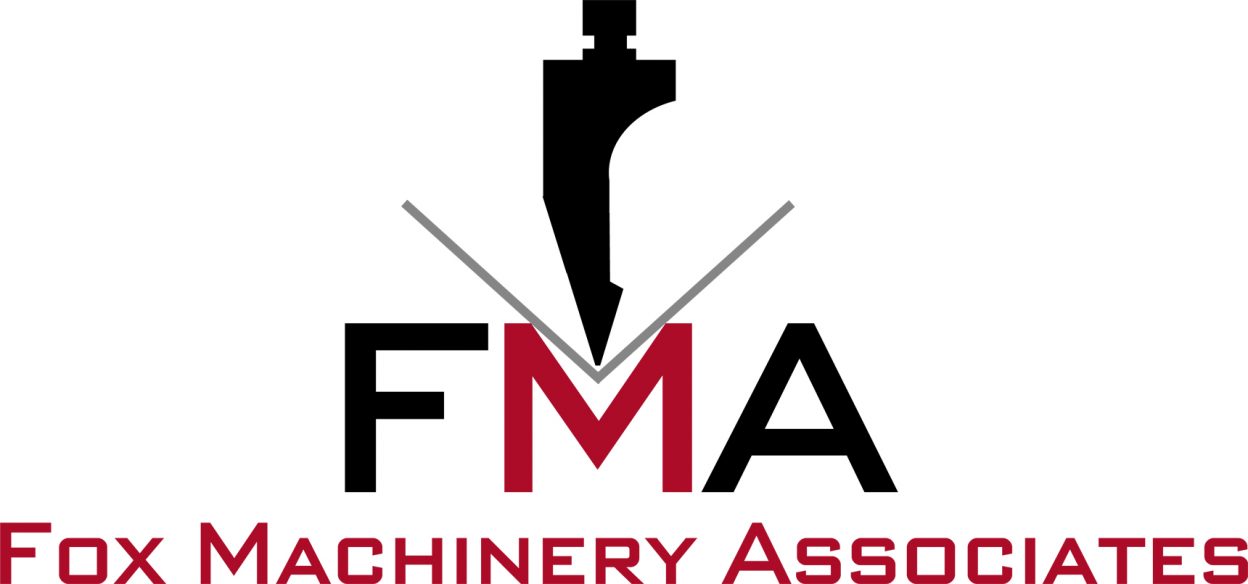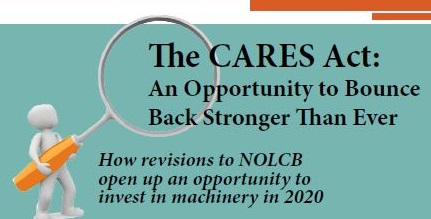How revisions to NOLCB open up an opportunity to invest in machinery in 2020.
The Coronavirus Aid, Relief, and Economic Security (CARES) Act contains provisions to the US law as a result of COVID19. You have most likely read about, or directly interacted with, parts of the new laws involving insurance coverage, unemployment, and adjustments for loans, taxes and grants. Additionally, the CARES Act includes support for the global COVID19 response, paid sick leave, nutrition assistance and other programs and efforts. For S-Corps, C-Corps and LLC’s there is one edit to the federal tax laws which you may find interesting. Net Operating Loss Carryback (NOLCB) is a standing law that gives the ability for companies to deduct their current year tax losses against income from a prior tax year.
A BASIC EXAMPLE UTILIZING NOLCB:
A farming business has two profitable years which result in large federal tax payments. Then a drought causes the reporting of a loss. In order to smooth the tax burden during hard times, the loss carryback provision allows for the losses incurred in the third year to carryback to the first and second years. With a goal of improving businesses’ cash flow, the CARES Act revises the NOLCB tax law in two key ways:
- Provides for the carryback of losses after December 31, 2017 to each of the five taxable years preceding 2020.
- Suspends the NOLCB limit of 80 percent of taxable income. This means that companies may deduct to eliminate all (100%) of their taxable income in a given year. In the past, a company could not exceed 80 percent.
Through NOLCB, tax payments from up to five years ago can be refunded due to a loss of profit reported in the current year. While it in imperative that you discuss NOLCB with your Tax Advisor or CPA, there is definitely an opportunity here for companies who are looking to purchase large machines in 2020 and:
- Are an S-Corp, C-Corp or LLC
- Have reported profits on their taxes going back as far as 5 business years (so forget anything prior to 2015)
- Are in a position to “weather the storm” of 2020
AN EXAMPLE…
…closer to your manufacturing company may shed light on this new tax concept that not only corporate decision makers, but CPAs and Tax Advisors are studying.
• Your company is on track for report a net income of $300,000. in 2020.
• You are considering the purchase of a $1,000,000. machine.
• In your 2020 tax return you are allowed a $1,000,000. depreciation deduction which puts your company in a tax loss of $700,000.
• The Act allows this loss to be carried back and applied to your taxable income for up to five years. So, starting in 2015 and moving forward.
• The 2015 taxable income is reduced by $700,000., creating a tax refund of $245,000. if the company fell in the 2015 federal corporate tax rate of 35%. If the loss is not fully absorbed by 2015 income, we pull from the 2016 and then 2017 returns until the loss is fully absorbed.
So What?
As in the past, companies have the option to finance the purchase of a machine. With a plan in place to make only a few payments in 2020, a company would receive 100% depreciation on the new machine when filing their 2020 federal tax returns. The loss would carry back to previously profitable years when the federal tax rates were higher than they are now. For a C-Corp, we are looking at tax rate differentials of 21% for 2020 versus 35% in 2015. A company would receive a larger refund from the government, in US Corporate Tax Dollars, creating cash flow while investing in their own growth.
If your strategic planning this past January included new technology and machinery, it is worth having a conversation with your Tax Advisor or CPA. While it might be against your business instincts during this downturn, for many manufacturers the NOLCB revisions to the tax law may create an opportunity to bounce back stronger than ever.
Don’t hesitate to reach out to the FMA Team with questions – we are here to help and support you in any way that we can.
[maxbutton id=”9″]

